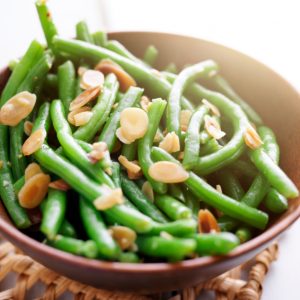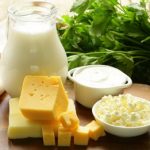 While we’re often thinking about our skin and hair (and how they change with age!), we don’t always give our bones the same kind of consideration. But we should.
While we’re often thinking about our skin and hair (and how they change with age!), we don’t always give our bones the same kind of consideration. But we should.
When it comes to bone health facts, there are some important ones to know. Bones, like the rest of our body parts, are living material. They’re in a constant state of remodeling, breaking down and building up – as if they’re constantly under construction, just like city streets in the summertime.
Advertisement
Don’t think of them like a skeleton model in a chiropractor’s office that stands still and doesn’t change. Our bones are always changing. Physiologists say we create about 11 skeletons over the course of our lifetimes. So we need to give our bones, just like we do the rest of our body parts, the right tools to minimize the effect of aging on bones, and create better bone health in seniors, for example, to reduce the bone loss. We need a healthy bones diet.
Maintaining strong bones is essential
 Why is bone health so important for us? We rely on our bones to be strong and healthy so we can carry on with our daily activities. Bones are the foundation of the body’s support structure, keeping us tall and mobile.
Why is bone health so important for us? We rely on our bones to be strong and healthy so we can carry on with our daily activities. Bones are the foundation of the body’s support structure, keeping us tall and mobile.
But with aging, we start to experience bone loss, putting us at risk for osteoporosis, a condition where bones become fragile and porous – where are bones are actually thinning. This results when bone tissue is broken down faster than it is formed. And when this happens, the bones can become weakened, increasing the chances of fracture, especially in the hips and spine. Which is why bone health in seniors is such a concern. Serious injury can land you in hospital and may affect your mobility and independence.
As our population ages, the number of hip fractures, one of the most common fractures in seniors, is likely to increase. By 2030, the number of hip fractures is projected to reach 289,000, an increase of 12 percent, the U.S. Centers for Disease Control and Prevention (CDC) says. A large proportion of fall deaths occur because of complications following a hip fracture. Another sobering fact: One out of five hip fracture patients dies within a year of their injury.
When we’re looking at the causes of osteoporosis, a lot of it has to do with how much bone mass you’ve attained in your youth and what you’ve done to reduce bone loss as an older adult.
In your childhood, you’re growing and developing – often with surprising growth spurts along the way (aunts and uncles would always comment!). During these formative years, your body is making new bone faster than it breaks down old bone, and your bone mass increases. High bone mass is a good thing. Your bones are strong and healthy.
But what you may not realize is most people reach their peak bone mass at around age 30. By that point, getting older and mature is no longer your best friend. After age 30, you lose slightly more bone mass than you gain as bone remodeling continues. Depending on the individual, and factors like diet, weight and exercise, will play a role in the health of your bones down the road.
As we mentioned, how likely you are to develop osteoporosis rests on how much bone mass you attain by the time you reach age 30 and how rapidly you lose it after that. The higher your peak bone mass, the more bone you have and the less likely you are to develop osteoporosis as you age.
Bone health in seniors
 Bone mass or density is lost as people age, especially in women after menopause. The bones lose calcium and other minerals. For women post-menopause, estrogen levels drop and bone loss speeds up. Estrogen plays a role in laying down healthy new bone in the body.
Bone mass or density is lost as people age, especially in women after menopause. The bones lose calcium and other minerals. For women post-menopause, estrogen levels drop and bone loss speeds up. Estrogen plays a role in laying down healthy new bone in the body.
Statistics suggest that half of American women over 50 will likely fracture a hip, vertebra or wrist because of weak, vulnerable bones, and roughly one in five will end up with osteoporosis. Men are at risk, too, but women especially have been told to start exercising and follow a healthy bones diet to fight bone loss.
Joint problems are also a concern at this stage in life, as joints become stiffer and less flexible. What happens here is fluid in the joints may decrease and the cartilage rubs together and erodes. This is one of the main causes of osteoarthritis, the most common form of arthritis caused by inflammation, breakdown and the eventual loss of cartilage in the joints. Basically, the cartilage wears down over time.
You may start to feel it first in the hip and knees or the finger joints, which lose cartilage and the bones thicken slightly. Finger joint changes are more common in women and may be hereditary.
Diet for bone health
 It’s never too late to take steps to help your bones stay strong and minimize bone loss. A healthy bones diet is a good place to start. Here are foods to include and foods to cut back on.
It’s never too late to take steps to help your bones stay strong and minimize bone loss. A healthy bones diet is a good place to start. Here are foods to include and foods to cut back on.
Foods to include
You want to include plenty of calcium in your diet. While research has shown that calcium supplements can be damaging to bones and affect your body’s absorption of other key nutrients, you want to focus on calcium-rich foods to help keep your bones strong.
For adults ages 19 to 50 and men ages 51 to 70, the recommended dietary allowance (RDA) is 1,000 mg of calcium a day. The recommendation increases to 1,200 mg a day for women after age 50 and for men after age 70. One cup of cooked broccoli has 180 mg of calcium, for example.
Good sources of calcium include:
- Dairy products such as yogurt and milk
- Almonds
- Broccoli
- Kale
- Canned salmon with bones
- Sardines
- Soy products, such as tofu
- Beans.
Get your vitamin D. Your body needs vitamin D to absorb calcium. For adults ages 19 to 70, the RDA of vitamin D is 600 international units (IUs) a day. The recommendation increases to 800 IUs a day for adults age 71 and older.
Good sources of vitamin D include the following:
- Oily fish, such as tuna and sardines
- egg yolks
- fortified milk.
Advertisement
Magnesium is also important for calcium absorption. In fact, a deficiency in this mineral can increase your risk of osteoporosis and other illnesses. Good dietary sources of magnesium include:
- Green leafy vegetables, such as spinach
- Legumes
- Nuts
- Seeds
- Whole grains.
Foods to avoid
A healthy bones diet should limit certain foods that have a negative effect on the absorption of calcium and magnesium. These foods include the following:
- Soda
- Added sugars
- Alcohol
- Processed food.
Your healthy bones diet should be full of fresh, whole foods so your body – and your bones – get the nutrients they need. Especially when it comes to bone health in seniors, eating the right foods is key to reducing bone loss and enjoying your mobility and independence for the years to come.
